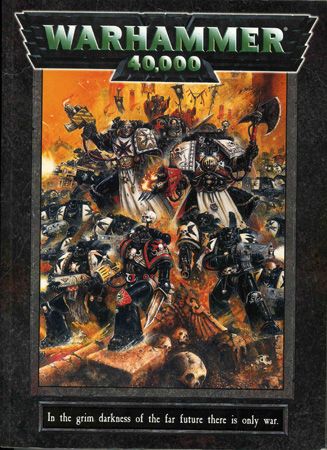Warhammer 40,000 (Third Edition) (1998) Board Game
Warhammer 40,000 (Third Edition) is a tabletop miniature wargame set in a dystopian science fiction universe. Released in 1998 by Games Workshop, it is the third edition of the popular Warhammer 40,000 franchise. The game is known for its intricate miniatures and rich lore, drawing players into a dark and gritty world of intergalactic warfare.
Game Components of Warhammer 40,000
How To Setup Warhammer 40,000
Setup involves selecting armies, deploying miniatures on the battlefield, and organizing units according to the Force Organisation Chart (FOC). Players must choose one HQ and two Troop units, with optional additional units in Elites, Fast Attack, and Heavy Support slots. The game also includes setting up terrain and determining mission objectives.
Gameplay Mechanics and Game Objective
Player Experience
The Third Edition of Warhammer 40,000 was a significant departure from its predecessors, aiming for a more streamlined and accessible game. This shift was met with mixed reactions; veteran players felt it was too simplistic, while new players appreciated the easier learning curve. The game’s focus on squads and units over individual heroes and the introduction of new armies like the Dark Eldar and Necrons expanded the game’s scope and appeal.
Pros
Cons
Personal Thoughts on Warhammer 40,000
Warhammer 40,000 Third Edition is ideal for players looking for a more fast-paced and accessible tabletop wargaming experience. It is particularly suited for new players who want to dive into the rich lore and grimdark universe of Warhammer 40,000 without being overwhelmed by complex rules. However, veteran players who enjoyed the intricacies of earlier editions might find it less satisfying. Overall, it marks a significant milestone in the evolution of the game, balancing simplicity with depth and setting the stage for future editions.
We are supported by our audience. When you purchase through links on our site, we may earn an affiliate commission, at no extra cost for you. Learn more.

